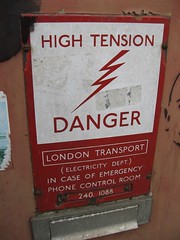Sometimes, there’s nothing wrong with the scene set up: we’ve put Mitch into a situation where he would be uncomfortable, unsure of himself, or required to perform a monumental feat. And yet somehow, the scene still doesn’t get the reception we want. Critique partners note that the scene—a turning point for the character—drags.
 We need this scene—so now what? Can’t they see how this situation would be stressful and tense for Mitch? Doesn’t that automatically imbue the scene with tension?
We need this scene—so now what? Can’t they see how this situation would be stressful and tense for Mitch? Doesn’t that automatically imbue the scene with tension?
Uh, no. Not if we didn’t put that there. Yeah, even though we’d all spent 300 pages together, if the feelings we know Mitch would have weren’t on the page, readers won’t see it.
Simply introducing more more tension—more conflict—through the narration can increase the tension in a scene. If Mitch just sits there and takes this pivotal situation, the readers won’t be engaged in his change—and it won’t be as believable.
Camy Tang wrote an article about this, taken Donald Maass’s “tension on every page” axiom to the next level—tension in every line. She used a great before and after comparison of a cut scene from one of her novels—one without the “tension commentary” and one with (going for tension with a humorous tone).
Weaving in your character’s emotions and observations—whether they’re a “why me” comedic effect, a “not me!” suspense effect or a “can I do this” character effect—can help to increase the tension in a turning point scene.
But don’t beat your readers over the head with it. If this is the fourth scene in a row where your protagonist is battling his Inner Demon, we readers are probably familiar enough that the conflict doesn’t have to be mentioned in every paragraph. In fact, if this is the fourth scene in a row with the same inner conflict, it might be a good time to see if all of those scenes are really necessary. Also, too much internal monologue can slow down the action of a scene, so try for a balance.
What do you think? How can you bring out your characters’ internal conflicts more?
Photo by Penguincakes



 .
.


 The fact is, when you’re still in love with your characters and your story, you’re more than willing to read the scenes that don’t really move the story along. One way to counteract this is to set the story aside. Yes, we’re always told to do this, and this is a big reason why. Set it aside for 6 months to a year and give yourself some distance from the work.
The fact is, when you’re still in love with your characters and your story, you’re more than willing to read the scenes that don’t really move the story along. One way to counteract this is to set the story aside. Yes, we’re always told to do this, and this is a big reason why. Set it aside for 6 months to a year and give yourself some distance from the work.